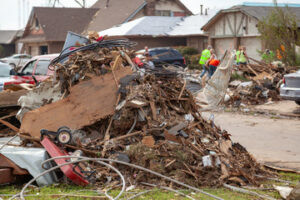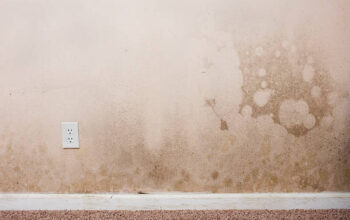When a disaster strikes, it’s important to be prepared for the cleanup process. This will allow your building to get back on its feet quicker. Disaster cleanup companies are available to help you in this time of need. Read on to learn more about the types of supplies needed for the cleanup process and the safety measures you should take as an employer.
 When you’re trying to clean up after a disaster, hiring a disaster cleanup company can help. Disaster Cleanup will access the necessary equipment to assess the damage quickly. They should be accessible by phone, email, or text to answer your questions. The right company will also advise on cleaning up the affected area.
When you’re trying to clean up after a disaster, hiring a disaster cleanup company can help. Disaster Cleanup will access the necessary equipment to assess the damage quickly. They should be accessible by phone, email, or text to answer your questions. The right company will also advise on cleaning up the affected area.
Disaster Cleanup poses health risks for volunteers, homeowners, and workers. Floodwaters can contain sewage and pollutants that can cause serious infections and diseases. In addition, damp environments encourage the growth of mold. Mold exposure can cause respiratory problems.
The hazards of disaster cleanup include a range of physical and ecological problems. In general, they are caused by large-scale events. These disasters are usually very destructive and may disrupt social order. In some cases, they may result in the loss of lives. In such cases, disaster cleanup can be essential to save lives and property.
Fortunately, there are several ways to reduce disaster cleanup costs and losses. First, the government can take steps to protect the environment and reduce the number of disasters. They can do this through disaster loss mitigation planning, environmental regulations, and property protection. Public education efforts can also reduce the impacts of hazards. For example, educating children about environmental safety and real estate disclosure can help reduce hazard losses.
Natural disaster cleanup presents many hazards. For example, workers may be exposed to carbon monoxide, fire, and other dangerous materials. They must also be aware of electrical hazards and confined spaces. The Occupational Safety and Health Administration (OSHA) provides guidelines to ensure their health and safety. However, it is important to note that disaster cleanup can be dangerous, even when the situation is under control.
Many supplies can be used during a disaster cleanup operation. These items can help to protect the health and safety of personnel on the cleanup team. For instance, janitorial supplies such as sorbents are vital to deal with water damage. Additionally, emergency food and water supplies are important during the cleanup process. As well as these, disaster survival kits are essential to assist team members during the cleanup process. Some of these kits also contain tents, which can be used for temporary shelter during the cleanup.
Disaster cleanup supplies may include boxes of 1-gallon Ziploc bags to keep clean supplies together. Heavy-duty plastic garbage bags are another good idea to store debris. You can also use the disinfectant cleaner as a cleaning spray to disinfect surfaces. Another important supply for disaster cleanup is a small shovel for digging latrines.
Disaster cleanup can be very dirty and dangerous. Contaminated water and a lack of sanitation can make people sick or even kill them. To ensure your family and other survivors stay clean and healthy, consider getting a small disaster kit containing hygiene and sanitation supplies. Sanitation kits can help keep people clean and healthy by acting as a latrine.
In addition to disaster supplies, it is important to carry flashlights. They are necessary during search and rescue operations. They can also be useful for outdoor activities. First aid supplies are another important item. While many facilities have first aid kits, they may not be equipped for all types of common injuries during a disaster. Common supplies include gauze, sterile saline solutions, and splints.
Disaster supplies kits should also include food and water. These kits should be prepared in advance of a disaster so that you will be prepared. You should assemble these kits before a disaster strikes because disaster supplies may run out before disaster relief workers reach you. For example, if you are a parent, it is important to take some time to gather disaster supplies for your household.
Employee safety during disaster cleanup requires that workers wear the proper protective equipment and stay hydrated. They should also be aware of mold, toxic materials, and water runoff hazards. These conditions can cause respiratory distress if not properly managed. OSHA recommends using a self-contained breathing apparatus or positive-pressure supplied air respirator.
If you’re hiring a disaster recovery company, make sure they’ve worked on similar disasters in the past. Experience is important when it comes to estimating costs and timelines. Moreover, many businesses follow industry standards, such as the IICRC, and the Institute of Inspection, Cleaning, and Restoration Certification. IICRC members follow strict training standards and an ethical code of conduct.

